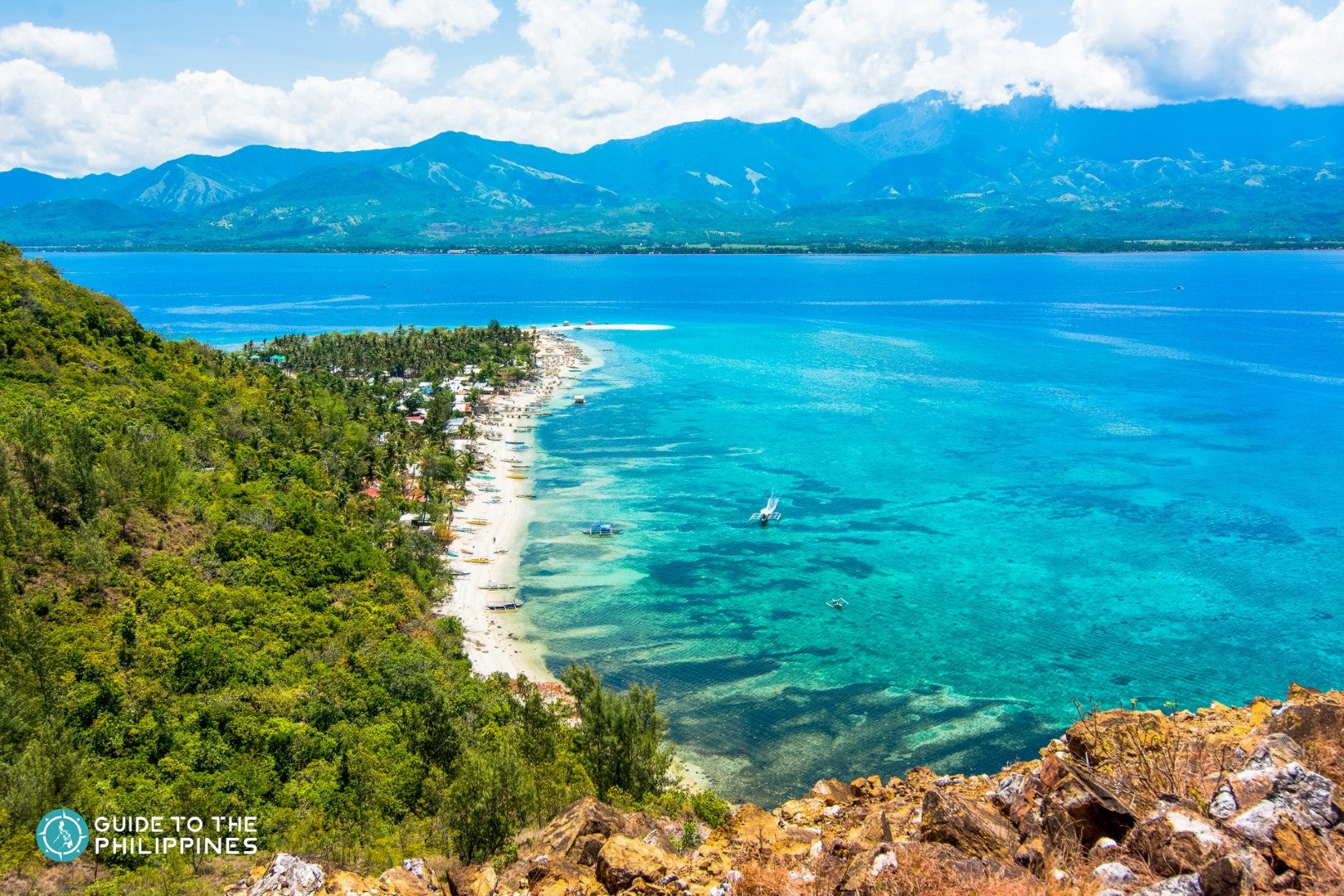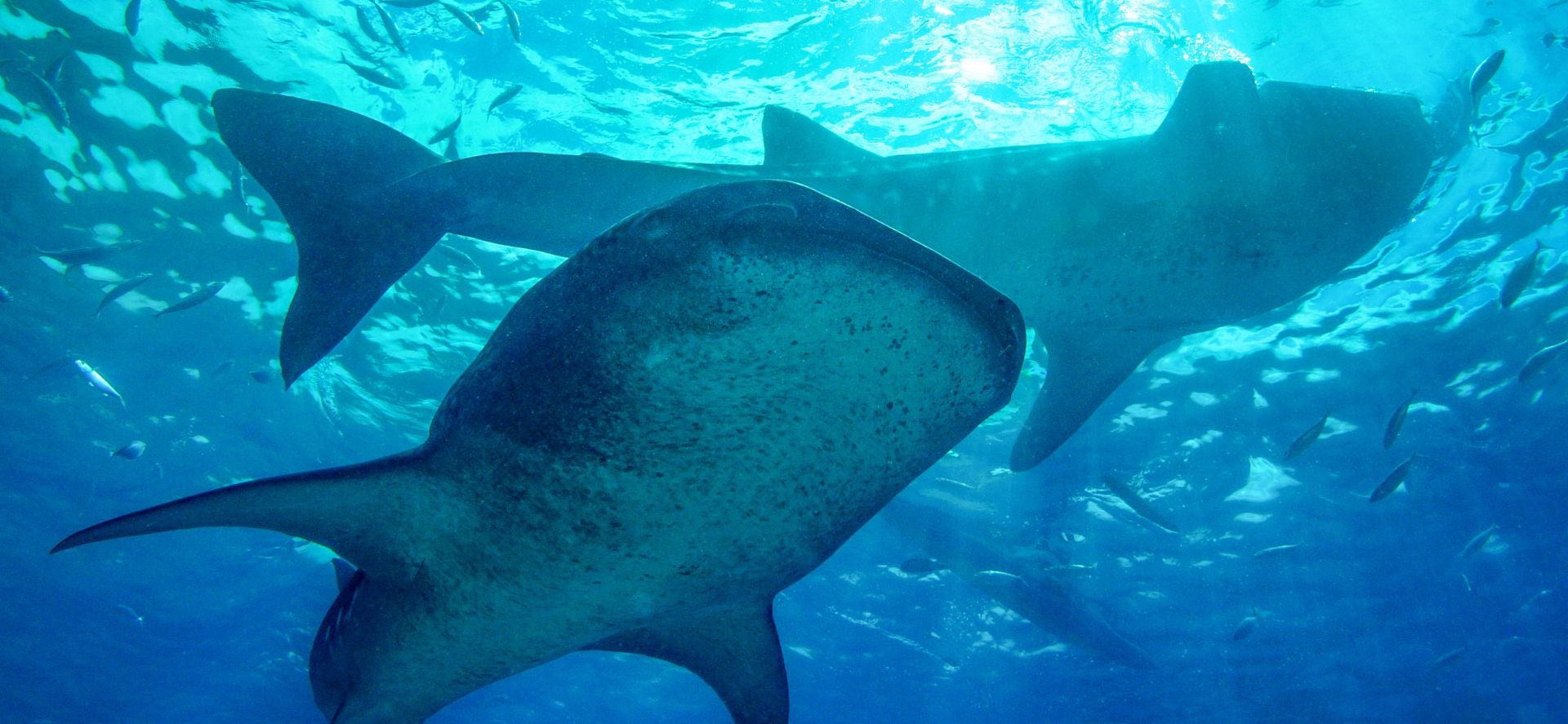
Quezon Province tourist spots showcase sandy coastlines, rugged mountains, rich culture, and strong spirituality. These are some of the reasons why the province of Quezon is worth visiting.
Not to be mistaken with Quezon City, the province of Quezon lies in the Calabarzon region of Luzon Island. It is named after Manuel L. Quezon, the Philippines’ first freely- elected president and second president in history.
The province is approximately 110 to 130 kilometers southeast of Manila, the Philippines' capital. The drive to get there from the country’s capital takes only about 2 to 3 hours. Quezon’s accessibility and proximity to Manila is another reason why the province has become a popular weekend getaway destination.
Quezon beaches and islands are underrated but they are nonetheless beautiful. Some of them receive little tourist attention so they still maintain their unspoiled environment. Many of them are home to some of the best resorts near Manila.
Several landmarks in the Quezon Province hold great cultural and historical importance to the country. The Filipino people’s devotion to religion and spirituality is also very evident here.
If you want to maximize your visit to the province, here are the best Quezon Province tourist spots to consider visiting with the help of Quezon tours.
12. Borawan Island
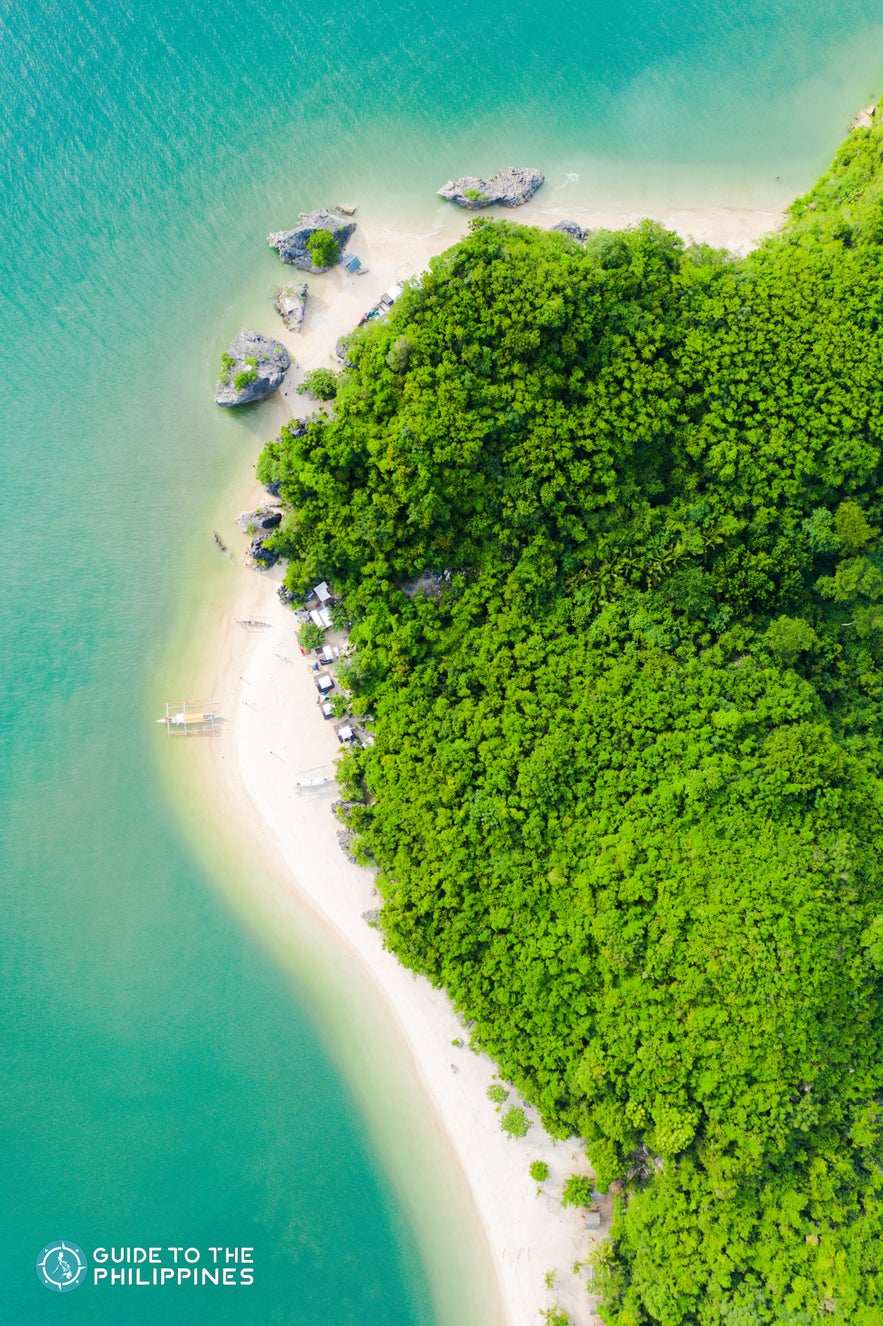
Borawan is a great quick getaway spot for people living in Metro Manila. This is a tiny island that sits off the coast of Barangay Lipata, Padre Burgos.
From Padre Burgos, you need to take a 15-minute boat ride to reach Borawan.
Established in 2013, Borawan Island is home to one of the popular Quezon beaches. The sand on its coast is powdery white, comparable to Boracay. In fact, the name Borawan is a combination of Boracay and Palawan. Aside from the Boracay-like sand, the island also has large giant rock formations similar to Palawan.
Although Borawan is a favorite spot among overnight campers, it also has open-air cottages, a restaurant, and a hotel. Some of these cottages can accommodate 10 to 15 people.
The resort management offers packages that include boat transfers and island hopping tours. It is an ideal place for families and group travelers. While on the island, guests can grill their own food and rent tents. The island is a great place to unwind and relax. It gives off a cast-away vibe, away from the city and all modern nuances. Borawan is popular among overnight campers. Tents usually line up the shore. You can rent a tent or bring your own. For short visits, you may book a Borawan day tour from Manila.
11. Sunshine Farm

Photo by Sunshine Farm Philippines
Sunshine Farm is a sunflower farm located in Lali, Tiaong Quezon. It is only a few hundred meters away from another famous spot in the province, Villa Escudero. The farm was opened in February 2018 and had 4000 sunflower seeds planted.
The farm quickly became popular in Quezon not only because of its beauty but because of its special cause. The farm aims to provide a livelihood to persons with disabilities (PWDs). Many of Sunshine Farm’s employees are people with disabilities. The farm seeks to give them hope and opportunities. The farm’s owner Rhodora Palomar-Fresnedi is a well-known PWD advocate.
A visit to this farm usually involves walking around the property that is filled with hundreds of sunflowers in full bloom. Sunshine Farm is a popular spot for photoshoots and small events. Visitors usually take photos of the farm’s beautiful flower scenery.
Make sure to wear light clothing and bring water and sun protection during your visit. Take note that the number of sunflowers blooming depends on the time of the year. If you want to see hundreds in full bloom, the best months to visit are in April and May.
The sunflowers are available for purchase. You can stop by the farm’s shop for souvenirs and gifts. Part of the earnings from the farm’s products goes to supporting sustainable livelihood programs for people with disabilities.
10. UGU Bigyan's Pottery Garden
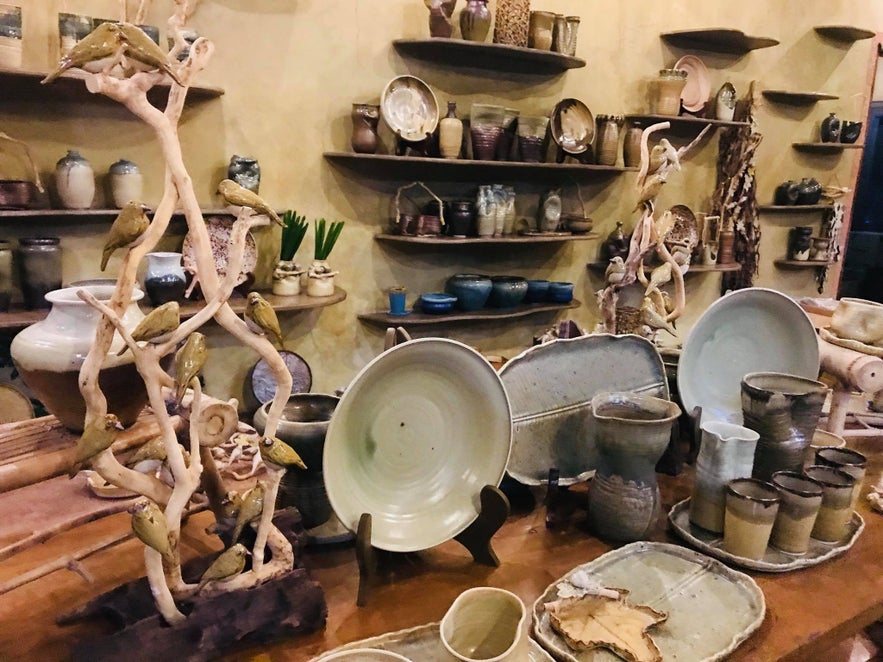
Photo by UGU Bigyan’s Pottery Garden
UGU Bigyan’s Pottery Garden is another unique attraction in Quezon. Located in the town of Tiaong, this site used to be the private home of the prominent pottery artist Augusto “Ugu” Bigyan. Augusto eventually transformed his residence into a pottery workshop studio, art gallery, and restaurant in one.
UGU Bigyan’s open grounds and architecture are what make it such an attractive spot. The main house has massive windows and red-bricked walls. Some huts are designed with red bricks and nipa roofs. The look and feel of these structures complement the lush surroundings filled with large trees.
The site opens its doors to visitors who would like to explore its pottery garden and grounds. There is a shop where you can buy hand-crafted potteries and other souvenirs. It also offers regular pottery workshops to the public. The restaurant section is located in the garden area and features an open-air Balinese style design. This restaurant specializes in serving Asian fusion dishes.
You need to book in advance to join workshops or dine at their restaurant. Rooms are available on site for those who want to do overnight retreats and stays.
UGU Bigyan's Pottery Garden is located at Alvarez Village, Barangay Lusacan Tiaong. From Metro Manila, the garden complex is about 110 kilometers away, which is about a 3 hour - drive if you use the Pan-Philippine Highway.
9. Lucena Cathedral
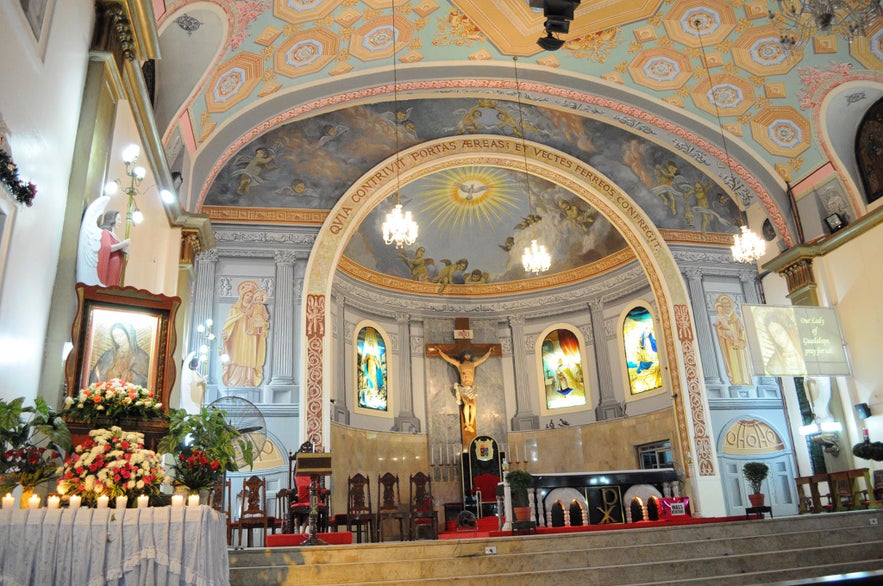
Photo by St. Ferdinand Cathedral
Lucena Cathedral is one of Quezon’s iconic landmarks. The original church was constructed in 1884. However, the church was rebuilt because the first structure was destroyed by fire in May 1887.
Lucena Cathedral remains to be one of the oldest churches in the province. It is the seat of the Bishop of Lucena. The cathedral’s official name is Saint Ferdinand Cathedral Parish, and its patron saint is Saint Ferdinand III. He is a 13th-century monk from Castile.
Although it has experienced many renovations, Lucena Cathedral has maintained its colonial look and charm. Its most striking features include its high vaulted ceiling and magnificent altar, which features a large replica of Jesus Christ on the cross.
The cathedral is a well-loved structure in Lucena and a symbol of the locals’ devotion to the Catholic religion. The cathedral hosts daily masses but Sundays are especially busy as more families go to the church and pray as part of their Sunday routine. Because of its central location, locals love to use the church as a meeting place.
During your visit, take the opportunity to go inside the church and admire its well-preserved architecture. You can also walk around the exterior grounds and witness how the locals go about their daily lives in the busiest section of the city.
Lucena Cathedral stands in Barangay Poblacion in the central area of Lucena City. It is right along Quezon Avenue.
8. Kamayan sa Palaisdaan
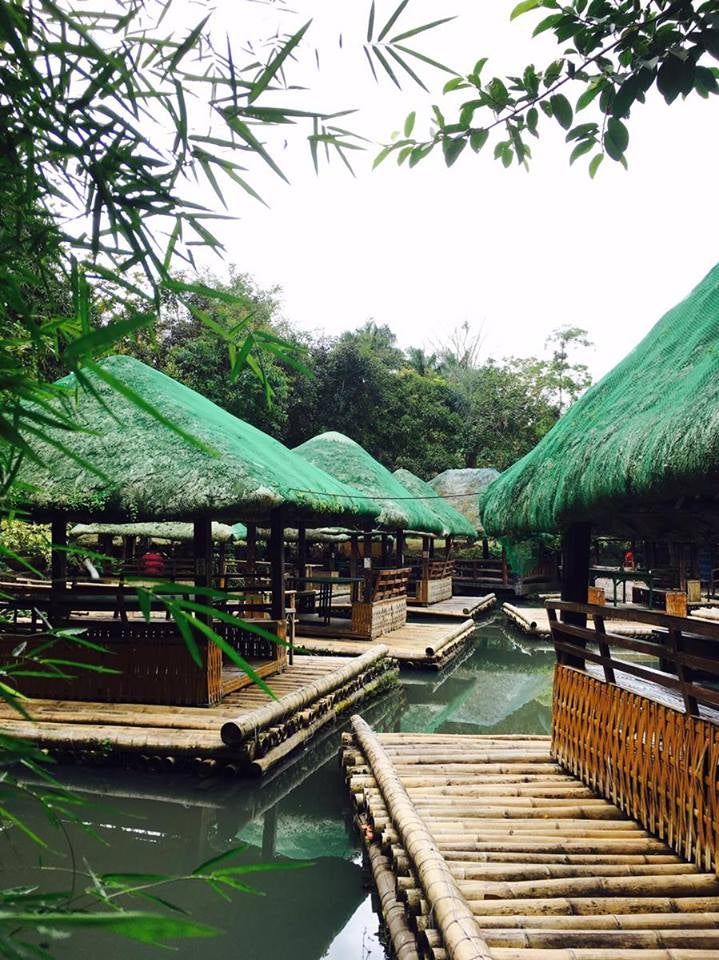
Photo by Kamayan sa Palaisdaan
If you are looking for a food-based attraction in Quezon, then consider Kamayan sa Palaisdaan. This name is derived from the Filipino way of eating seafood dishes using bare hands.
Founders Rosauro Delos Santos and Evangeline Delos Santos started Kamayan sa Palaisdaan as a small fish pond and grilling spot in 1991. The business quickly grew and turned into a floating restaurant.
Today, Kamayan sa Palaisdaan is one of the most prominent Quezon Province resorts. This resort complex includes a hotel, three restaurants, two cafes, one bar, two swimming pools, and an eco-park.
Dining at the main Kamayan sa Palaisdaan floating restaurant is the top thing to do at the resort. This restaurant section consists of 60 floating rustic cottages floating on a man-made pond. The menu here mainly consists of native dishes and assorted seafood that Tayabas Quezon is known for. Some of the popular dishes include “Inihaw na Hito”(grilled catfish) and Pla-Pla (tilapia fish), which come from the pond itself.
While dining at Kamayan, you will get to enjoy the green scenery and cool breeze. The owners try to keep their prices reasonable so that the locals can still afford them. The resort offers free WiFI and self-parking. It has function rooms designed for group gatherings and events.
Aside from dining, you can also spend more time at the Kamayan sa Palaisdaan complex and enjoy activities like hiking, swimming, and horseback riding.
7. Minor Basilica of Saint Michael the Archangel
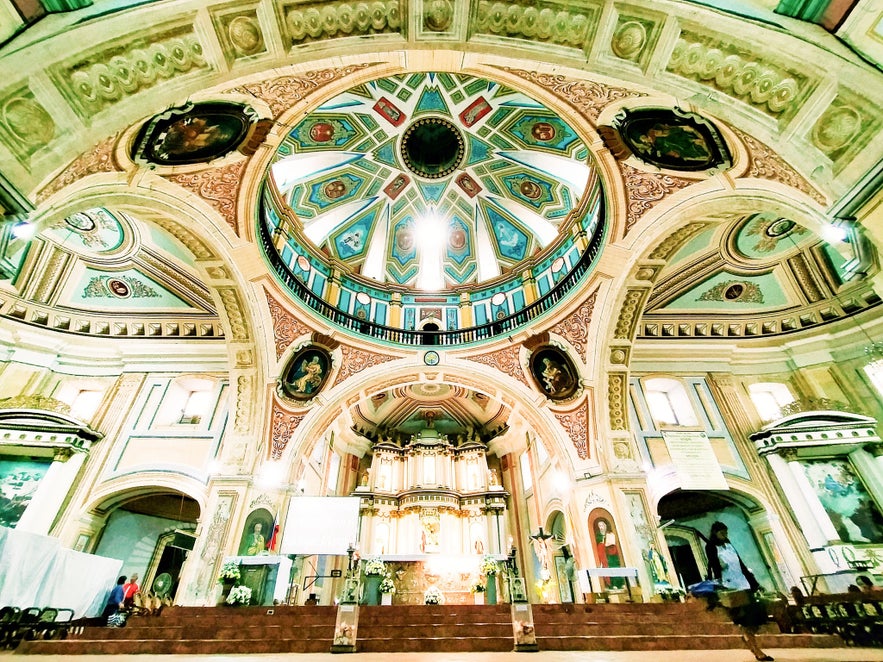
Photo by Minor Basilica of Saint Michael the Archangel
The Minor Basilica of Saint Michael the Archangel is Quezon’s largest Roman Catholic church. Located in Tayabas City, this church's original structure was built in 1585.
Tourists visit the basilica for its massive size, long history, and unique design. The church’s floor plan features a key-like shape. This is why locals often refer to the Minor Basilica as “Susi ng Tayabas” (the Key of Tayabas).
The basilica was declared a National Historic Landmark in 1978 by the National Historical Institute. The National Museum of the Philippines also recognized it as a Natural Cultural Treasure in 2001. It has experienced many repairs and reconstruction over centuries, but it has maintained unique features like the church clock and the extra-long isle.
The church clock, which sits on the belfry, was installed in the 18th century. Many consider it to be one of the oldest of its kind in Asia. This clock, which measures about 50 centimeters high and 42 meters wide, pulls a large old bell. The Minor Basilica’s aisle extends to around 103 meters (338 feet), making it the longest church aisle in the country.
The common consensus is that the Minor Basilica of Saint Michael the Archangel is one of the most beautiful churches in the country. While there, you can do a walking tour through the church and enjoy its Neoclassical interior design and painted ceiling.
6. Alibijaban Island

Alibijaban Island sits off the coast of Quezon’s Bondoc Peninsula and spans more than 400 hectares. The island has become a popular tourist destination in Quezon mainly because of its white beaches, coral reefs, and mangrove forest.
The mangrove forest occupies the central and central sections of the island. This area, which covers 225 hectares, is protected by law and is officially named Alibijaban Island Wilderness Area. This wilderness is home to several mangrove species and bird species. This is an excellent area to explore and do bird-watching.
The surrounding waters of Alibijaban Island are teeming with marine life. This area is a protected marine sanctuary and is an amazing place to explore. If you want to snorkel here, don’t forget to bring your gear to the island.
The main accommodation options on the island are homestays and small resorts with nipa huts. It’s also possible to camp on the beach if you bring a tent along. Day trippers to the Alibijaban can also rent open cottages.
The municipality of San Andres Quezon is the main jumping point to the island. To reach Alibijaban, you need to ride a boat from the port of San Andres. San Andres is about 330 kilometers from Manila and can be reached via the Pan-Philippine Highway and Bondoc Peninsula Road.
5. Jomalig Island
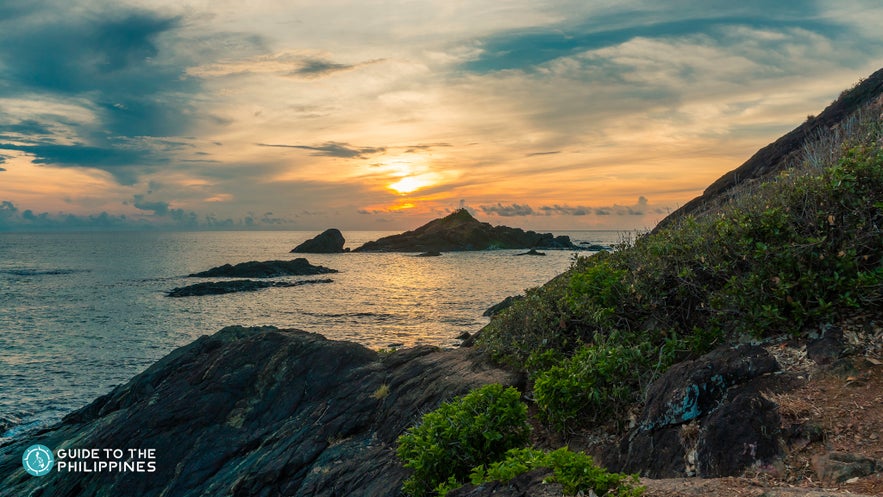
If you want a more adventurous Quezon Province tour experience, consider heading to Jomalig Island. It is one of Quezon’s farthest islands so it's not easy to reach. But for this exact reason, Jomalig’s sandy shore is more unspoiled compared to other beaches near Manila.
The island is known for its laid-back vibe, isolated feel, and golden sand beaches. While here, you can swim, snorkel, and go beach hopping. Salibungot Beach is the most popular beach on the island. You can also explore the island’s large lake and two-hectare mangrove area. It is also common for local motorcycle (called habal - habal) drivers to offer tours around the island.
From Jomalig, you can hire a boat and local fisherman to take you to neighboring islands and isolated beaches like Manlanat Island and Kanaway Beach.
There are small resorts and homestays on the island that accommodate visitors. Some resorts have rooms as well as camping grounds. Take note that visitors are no longer allowed to pitch a tent on the island’s public beaches. Therefore, you need to book a camping spot at a resort.
Jomalig sits on the Pacific Ocean, off the southern coast of Quezon province. The town of Real is the nearest jumping point to the island. From the town port called Ungos, you need to ride a boat for 5 to 6 hours to reach Jomalig. The island has an airstrip and caters to chartered flights.
4. Mt. Banahaw
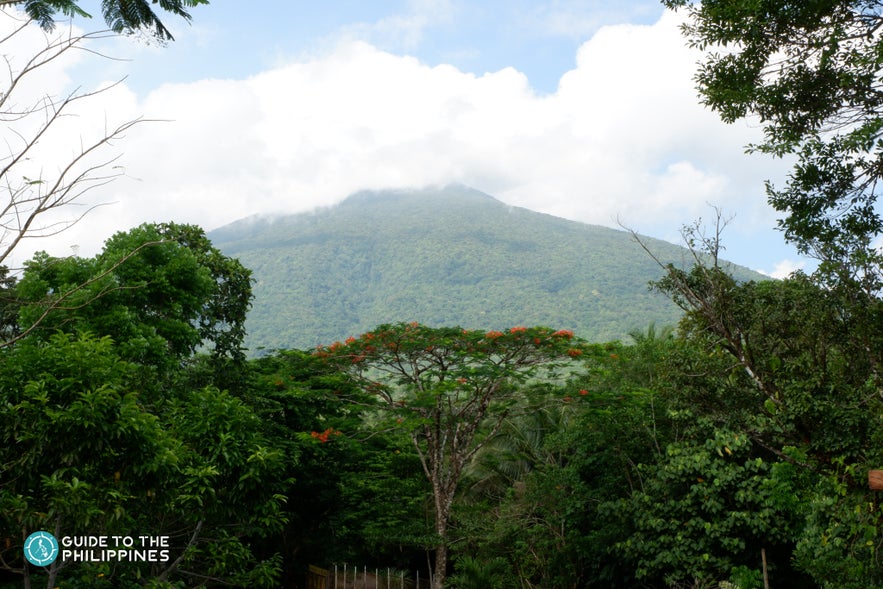
Mount Banahaw is the highest peak in the Calabarzon region of the Philippines. This name also refers to a complex that houses three volcanoes. These three volcanoes are Mt. Banahaw, San Cristobal, and Banahaw de Lucban. Mt. Banahaw is the tallest among the three, standing at about 2158 meters. The Mt. Banahaw complex sits on the boundary of Laguna and Quezon province.
Mt. Banahaw is widely known as a holy and mystical mountain. Local people believe that trekking the mountain can restore physical and spiritual health. There are also stories that the natural springs in the mountain have healing powers. Some of the mountain’s caves, streams, and boulders are also designated holy sites.
Because of these beliefs, hundreds of pilgrims visit Mt. Banahaw every year. The Catholic Holy Week is a particularly busy time with people gathering and performing rituals.
Whether you believe in Banahaw’s healing powers or not, it is a great hiking spot because of its height and accessibility. It is one of the tallest mountains near Manila. Once you reach the summit, you will get amazing views of the Quezon and Laguna landscapes. Trails to the mountain usually start at the towns located on the foothills. The towns of Sariaya and Dolores are two of the most popular jumping points.
Take note that Mt. Banahaw is an active volcano, so mild eruptions can still occur. Thus, it’s important to consult with local authorities before climbing the volcano complex.
3. Cagbalete Island
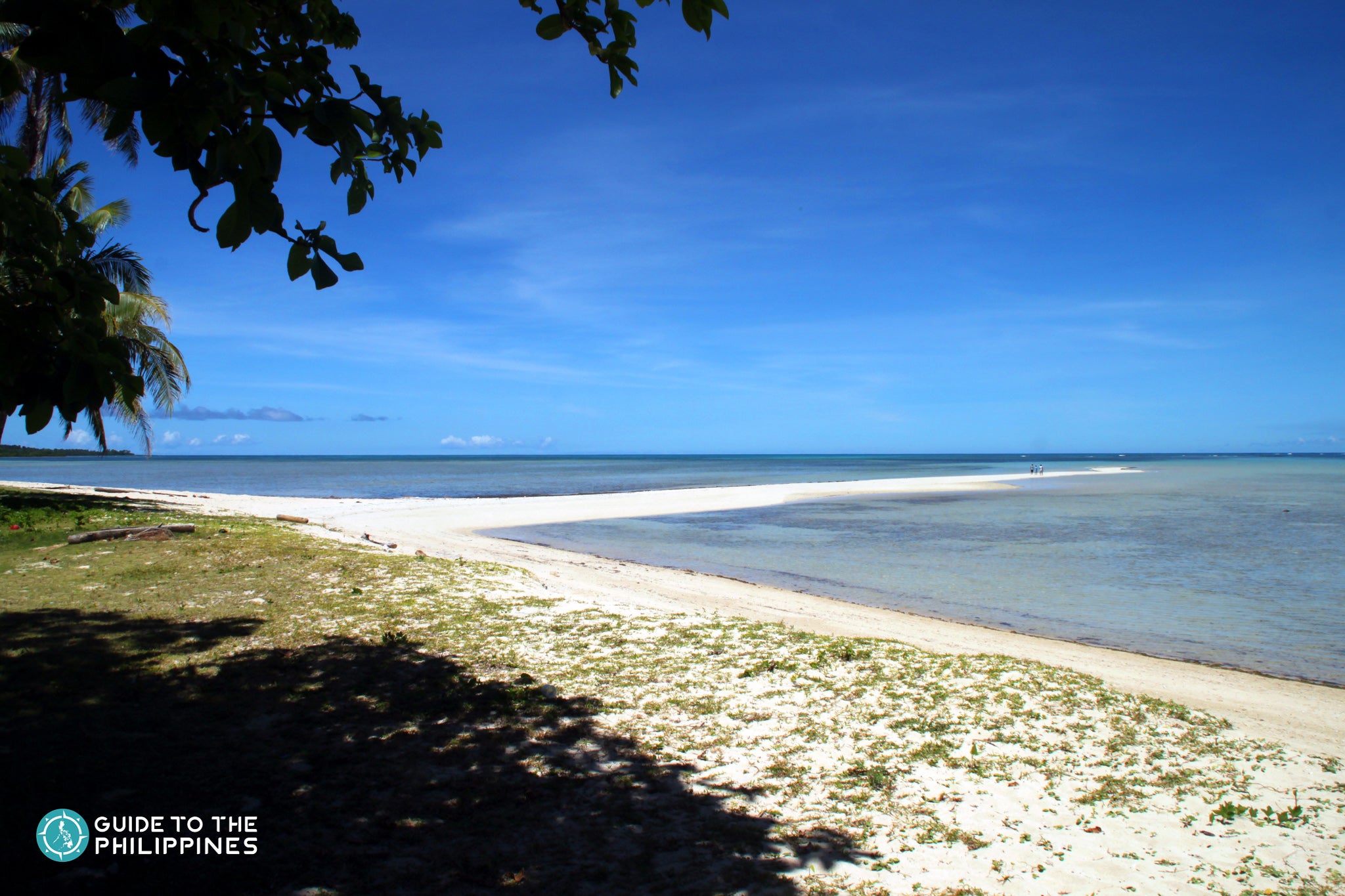
Secluded and serene are just some of the qualities that make Cagbalete Island a favorite Quezon Province tourist spot. With a land area of about 1640 hectares, Cagbalete sits on Lamon Bay, off the coast of the Mauban Town of Quezon.
People often compare Cagbalete's white sandy beaches to the ones on the famous Boracay Island. The island is also gifted with a diverse ecosystem, being home to a wide range of plant and bird species. Agoho Pine trees are seen everywhere on the island.
To reach Cagbalete, you need to get to Mauban’s main port. From there, there are public boats that take people to the island. Daily boat trips are available in the morning and afternoon. You also have the option to arrange a private boat transfer through a resort in Cagbalete.
There are three notable resorts on the island, and they are all situated in its southeastern section. These resorts include MVT Sto. Niño Beach Resort., Pansacola Beach Resort , and Villa Cleofas. You can find the famous Cagbalete sandbar in front of Villa Cleofas.
While on Cagbalete Island, you can beach hop, snorkel, swim, fish, bird watch, and horseback ride. The resorts can usually organize outdoor activities like camping, picnic, beach volleyball, and other water sports. Boat tours to neighboring attractions are also popular. Some of these attractions include the Fish Sanctuary, Ilog Bukana, Bonsai Island, and Baliscar Island.
2. Kamay Ni Hesus Shrine
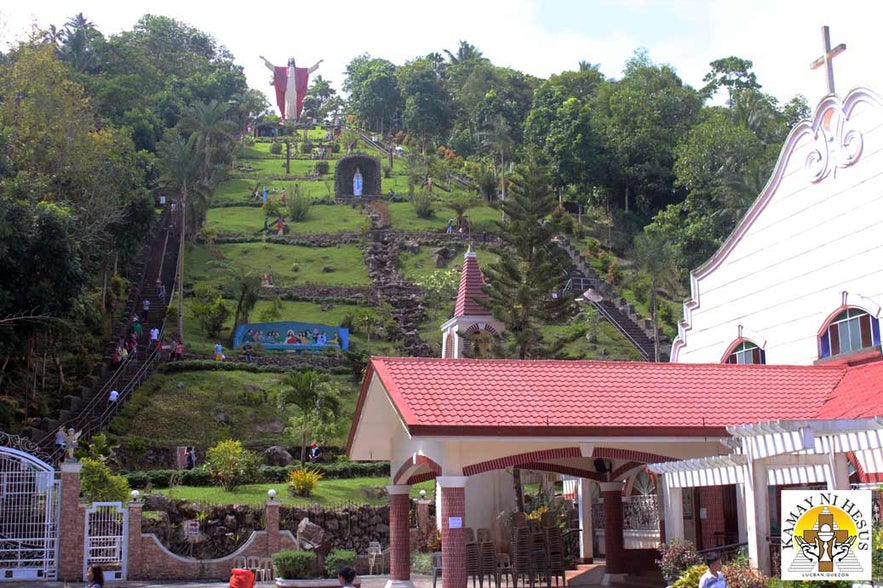
Photo by Kamay Ni Hesus
Kamay Ni Hesus Shrine (also called Kamay ni Hesus Healing Church) is one of Quezon's most prominent religious sites. The church and its surrounding structures cover 5 hectares of land.
Local communities regard Kamay ni Hesus as a sacred and spiritual site. For many, it has become a pilgrimage site that welcomes devotees who wish to pray for healing or repent for their sins.
Even if you are not a Catholic, you may still find the shrine compound a fascinating place to visit. Aside from the church, the spacious grounds of the property are lush, peaceful, and relaxing.
You may walk around the compound and appreciate the beauty of nature. However, you can also do the 300-step climb to visit the famous giant statue of Jesus Christ standing on top of a hill. The view of Lucban Quezon on the top is also worth the climb.
Kamay Ni Hesus manages a gift shop and a simple children's playground, called Garden of Eden. Parking spaces for those who are driving are also available.
Kamay Ni Hesus Shrine is located in Barangay Tinamnan, Lucban, about 119 kilometers south of Metro Manila. Its access point is along the Lucban - Tayabas Road.
1. Villa Escudero Plantations and Resort

Complete your Quezon Province tour by visiting Villa Escudero Plantations and Resort. Many Filipinos from across the country have heard about Villa Escudero as it is one of the oldest resorts in the country. It has been featured many times in local travel magazines, TV shows, and websites.
- Enjoy a hassle-free visit with these packages:
Villa Escudero started as a sugarcane and coconut plantation in Tiaong Quezon. In the 1980s, the owners transformed part of this property ] into a resort. Over the decades, Villa Escudero has become a go-to spot for tourists who would like to understand and experience Filipino culture and heritage.
The resort offers accommodation set in green and serene plantation scenery. It also houses a museum, which showcases one of the largest private antique collections in the country. The museum is an excellent place to learn and appreciate Philippine history.
Another highlight of your visit to Villa Escudero is the Labasin Waterfalls Restaurant. This restaurant lies at the bottom of the Labasin Waterfalls, the property's stunning centerpiece. Dining here means trying out traditional Filipino dishes while dipping your feet in shallow water.
Villa Escudero celebrates Filipino heritage by regularly organizing the Philippine Experience Show. This show features various dances originating from the different regions in the country. Some of these dance styles are almost rare to see. Other recreational activities available at the resort grounds include fishing, bird watching, rafting, biking, and swimming.
Like other Quezon Province resorts, Villa Escudero Plantations and Resort is accessible from the National Capital Region. It is situated in Tiaong Municipality, about 105 kilometers south of Metro Manila. For a hassle-free experience, you can book a Villa Escudero day tour from Manila.
Explore the Tourist Spots of Quezon Province
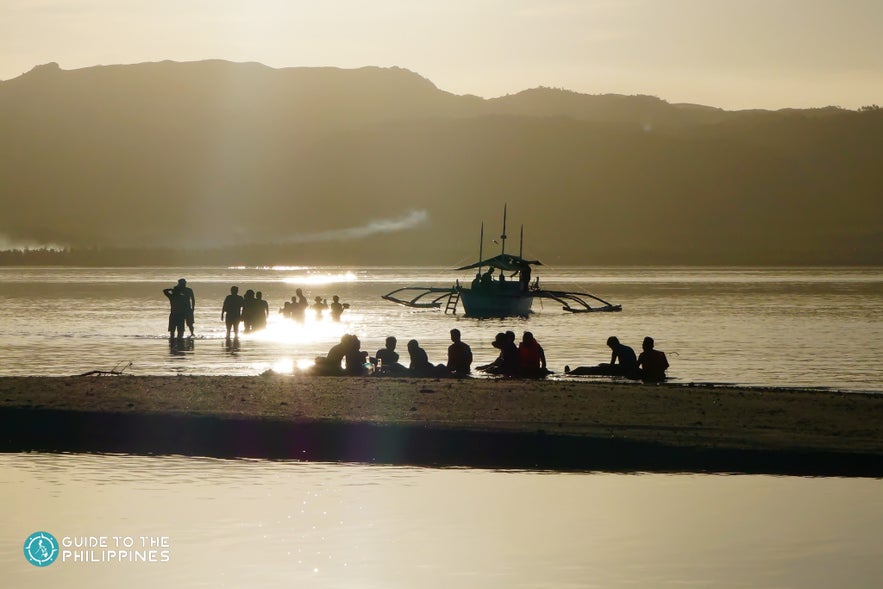
You can visit Quezon at any time of the year as it has fairly consistent sunny weather. The summer months of April and May is a busier time because of school holidays. More popular tourist spots near Manila like Laguna and Batangas often overshadow Quezon. However, this province has coastlines, rainforests, plantations, and farms that can impress any nature lover.
Many Metro Manila residents tend to drive their own vehicles to Quezon Province as it’s not too far away. However, you can also take one of the many buses that regularly go to key towns and cities in the province. It is also possible to arrange Quezon tour packages from Manila. You can also check out Philippine accommodations in and near the province.
Don’t simply pass by Quezon on your way to somewhere else. If you take your time to explore it, you will get to experience that authentic country life. Quezon Province is where you can appreciate nature, spirituality, and the rich Filipino heritage.


